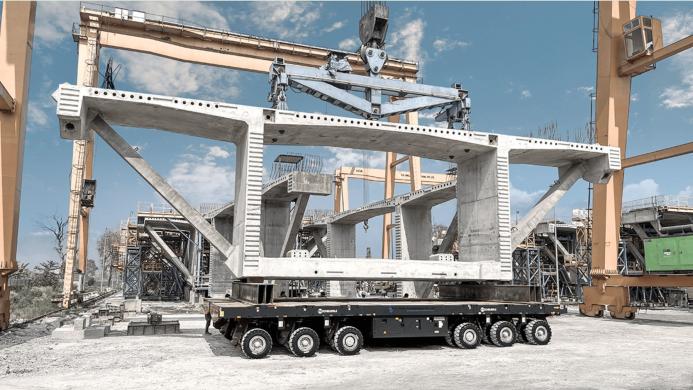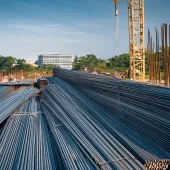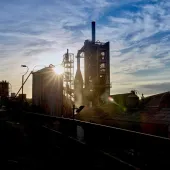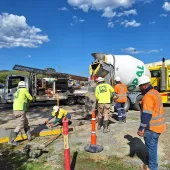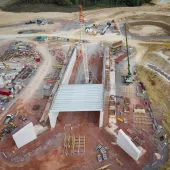Scheuerle SPMTs for Mahatma Gandhi Bridge project
Indian bridge construction specialist, SP Singla Constructions (SPSCPL), is using Scheuerle SPMT PowerHoss 330 modules to transport 175-tonne prefabricated concrete elements for the new Mahatma Gandhi Bridge in Bihar, India.
Support and expertise are being provided by Scheuerle’s parent company Transporter Industry International (TII) Group’s TII India from their Bawal facility.
The Mahatma Gandhi Bridge is a crucial link between Patna and Hajipur over the Ganges River, serving as an essential route in the region. The existing 40-year-old structure can no longer handle the heavy traffic, leading the Indian Ministry of Transport to commission a new, parallel four-lane bridge.
SPSCPL has adopted modern technologies and innovative transport solutions for this project. To move the 175-tonne concrete segments, the company is employing SCHEUERLE's SPMT PowerHoss 330 modules. Each self-propelled modular transporter (SPMT) features six axle lines, providing a load-bearing capacity of 330 tonnes. For transporting the prefabricated components to the girder launcher, two modules are coupled side by side. A special bridge crane then positions the parts in place.
Rohit Singla, owner of SPSCPL, and Rajeev Kumar Singh, Managing Director, decided to purchase the PowerHoss modules at Bauma 2022 after seeing their capabilities. "The decision to buy the PowerHoss modules was made just a day after seeing them at Bauma," said TII Group representatives.
TII India, part of the TII Group, is supporting the project by offering on-site customer support, service, and spare parts supply from its Bawal location. TII India ensures customer-oriented assistance, leveraging their extensive expertise in self-propelled modular transporters.
The SPMT PowerHoss modules are versatile and used across various industries, including construction, mining, and shipyards. They are designed for transporting heavy prefabricated components, steel structures, wind turbine parts, and large machinery. The modules come in two, four, or six-axle versions, accommodating payloads of up to 85, 180, or 330 tonnes respectively. They can be coupled laterally and lengthwise to handle even higher payloads, with a combination of four PowerHoss 330s able to move loads up to 1,320 tonnes.
The PowerHoss modules feature an integrated Power Pack Unit (PPU), making them ready for immediate use with minimal operator training. Their compact dimensions make them suitable for use in confined spaces such as tunnels, galleries, and hall areas. They can operate on various surfaces, including gravel, asphalt, and concrete, both indoors and outdoors.

The Mahatma Gandhi Bridge
The Mahatma Gandhi Bridge, also known as the Mahatma Gandhi Setu, is a major bridge in India that spans the Ganges River. It connects the city of Patna on the southern bank to Hajipur on the northern bank in the state of Bihar.
Approximately 5.75km (3.57 miles) long, the bridge is primarily constructed from prestressed concrete and steel and features a cantilever bridge design with segments connected by piers.
The bridge was inaugurated in 1982 by the then Prime Minister of India, Indira Gandhi, it was built to improve connectivity and facilitate the movement of goods and people between northern and southern Bihar, significantly reducing travel time and boosting economic activity in the region.
It serves as a vital link in the region's transportation network, accommodating a high volume of both passenger and freight traffic.
After more than 40 years of service, the existing bridge has faced challenges due to the increased traffic load and wear and tear over time. It can no longer efficiently accommodate the high volume of traffic.
Due to these limitations, a new parallel bridge is being constructed to ease the burden on the old structure. The new bridge will be a four-lane, prestressed concrete bridge, nearly 5.6km-long, designed to handle modern traffic demands.
The bridge has been instrumental in fostering economic growth and development in the region by improving accessibility and connectivity.
It plays a crucial role in facilitating trade and commerce between the northern and southern parts of Bihar and beyond.

